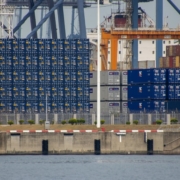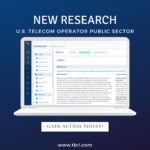Expanding into consulting: Huawei’s next strategic step
Clients’ technology uncertainties lead Huawei to expand consulting services
In discussing clients and their shifting needs and demands, Huawei leaders told TBR that while previous conversations typically started with a client’s immediate plans and end goals, Huawei’s clients now come to it with uncertainty around technologies, business changes and digital transformations. This shifting client mindset has compelled Huawei to invest more aggressively in consulting-oriented skills.
For Huawei, consulting includes helping customers transform their IT organizations and define their own values around digital transformation, with Huawei providing the foundational technology. In TBR’s view, this more technology-centric approach to consulting fits Huawei’s traditional strengths and does not require brand permission around strategy or high-level business consulting. Huawei’s leaders also noted to TBR that they believe digital transformation encompasses both business and technology changes, but the exact mix depends entirely on each client’s specific needs. By continually circling back to the vendor’s emphasis on individual clients, Huawei’s leaders reinforced their overall messaging on value, including consulting as value definition, implementation as value creation and operations as value optimization.
Previously, during TBR’s in-person visits to Shenzhen, China, and virtual meetings over the last two years, Huawei made passing mention of training, rarely singling out consulting and digital skills, except in the context of the vendor’s overall human resource management strategy.
During this year’s summit and in the follow-on discussions with TBR, Huawei’s leaders emphasized the criticality of training around digital transformation, including formal mentoring programs, enhanced client interactions, and what Huawei describes as “the Digital 9” — nine roles identified in nearly every engagement that increasingly need elevation from traditional IT to digital transformation.
Training at Huawei, like many of its technology-centric peers, includes both upskilling employees internally and certifying partners on its technology solutions. In TBR’s view, every leading vendor in the IT services space has adopted a similar ecosystemwide perspective on training. This means Huawei is aligned with prevailing industry trends, which is a critical step for a vendor with more than 30,000 reselling partners worldwide and 6,200 certified service and solutions partners that are capable of implementing solutions, according to Huawei leaders who spoke with TBR.
Huawei seeks growth outside China, even as its home country remains paramount
According to information shared during the event, Huawei’s Digitization and Technical Services revenue increased by 20% over 2021 as the vendor expanded “consulting services and vertical industry services.” In addition, the vendor noted, “Significant demand is coming from government and financial services and insurance markets, typically for supercomputing and modular data center scenarios. [Huawei’s] value proposition is based around our ability to plan, design and build data centers with low energy consumption, IT integration, data replication and disaster recovery, as well as our strong operation and maintenance capabilities.”
In discussing plans for 2022 and beyond, Huawei’s leaders explained to TBR that the vendor anticipates new growth opportunities in Eastern Europe, Southeast Asia, the Middle East and South America. As an example of the latter, Huawei’s leaders described engagements with electricity utilities outside of China. Huawei has developed expertise around digitalizing utilities’ operations, including generation, distribution and consumption, and during the summit the vendor described the Intelligent Electric Power offering as tightly interwoven with consulting partners, including Deloitte, PwC and Accenture. Notably, in June 2020, a Chinese state-owned enterprise, State Grid International Development Limited, bought one of the top four electricity distribution companies in Chile. In TBR’s view, Huawei adeptly leverages its home country’s strategic investments to further the vendor’s success abroad.
Smart Ports provide a test bed for Huawei and a massive opportunity for growth
During the summit, one particular use case stood out for TBR: Huawei’s Smart Ports solution. The Huawei executive presenting the solution noted that reducing on-site manpower demands through increased automation has proved to be both popular with clients and challenging to implement. Crane operators face long days in harsh and cramped environments, which can lead to long-term health problems. The Huawei solution, already in use in Shanghai, includes deploying remote-controlled cranes, with operators as much as 100 kilometers away from the port and, presumably, sitting in more comfortable surroundings.
Trucks, according to Huawei, present additional problems: Drivers do not get adequate rest and the work can be monotonous and boring, leading some drivers to leave for more exciting and lucrative opportunities. Working with various Chinese ports, Huawei developed an intelligent dispatching system and autonomous trucks, which stay within a port’s confines. As the first live test case, Huawei operates over 70 autonomous trucks in Shenzhen’s port. Lastly, Huawei leaders noted that port planning can also prove critical to reducing operational costs and enhancing overall port safety, leading the vendor to develop a cloud-based AI tool for planning and optimizing traffic within the port. Reduced planning time, according to Huawei, equals reduced operations costs.
TBR has tracked smart ports for years with the appreciation that these facilities can serve as test beds for integrating emerging technologies, such as 5G, IoT, edge compute and AI, while forcing IT and digital solutions to work seamlessly with real-world physical challenges, such as moving containers and ensuring ships do not collide. With China boasting four of the world’s five largest ports — and two of those currently serving as use cases for Huawei’s new solutions — Huawei will likely continue to be a leader in this field. In TBR’s view, supply chain challenges over the last two years have only heightened the need for highly integrated smart port solutions, and vendors that are able to capture the full breadth of ports’ needs will see an explosion of opportunity over the next few years. Huawei should be well positioned to take full advantage of this growth.
Sustained investment in building Huawei’s consulting capabilities presents a strategic challenge
The Huawei Global Analyst Summit reinforced many of the vendor’s strengths, including its ability to test and prove solutions in China, the advantages it gains from employing a technology-centric approach backed by hardware and software solutions, and its sheer scale. A new emphasis on consulting — if it is matched with sustained investments in training, selective hiring and concurrent upskilling around digital transformation — could enhance Huawei’s competitive advantages for engagements that extend beyond essential technology needs. Currently, TBR observes consultancies solidifying their relationships with the C-Suite, IT services vendors seeking deeper partnerships and technology vendors building professional services capabilities. Huawei can be part of all three of those trends, and the vendor’s near-term success may depend on how skillfully leadership manages any expansion into consulting.



